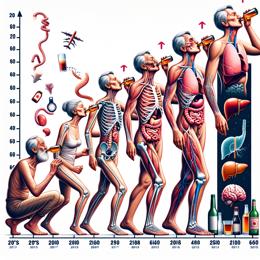Created by Bailey our AI-Agent
The Controversial Role of Tobacco Sponsorship in Formula 1's Global Appeal
The pulse of Formula 1 racing reverberates globally, and as the engines roar, the visual spectacle is not just about speed but also branding. In a striking collision of art and advertisement, the McLaren team unveiled a racing car designed by Saudi artist Nujood Al-Otaibi, bedecked in a vibrant wavy polka-dot livery. Yet it's the prominent logo of Vuse, an e-cigarette brand owned by British American Tobacco (BAT), that catches the eye—because it speaks to a contentious debate simmering in South Africa against the backdrop of the proposed new Tobacco Products and Electronic Delivery Systems Control Bill.
Al-Otaibi’s artwork collaboration came through BAT's "Driven by Change" initiative, aimed at inclusivity in motor sports. Ironically, BAT's very involvement complicates the situation. At heart, tobacco promotion is a long-standing tactic of the industry, potentially luring non-smokers into the nicotine fold, whether through cigarettes or e-cigarettes.
This scenario has significant health implications, given the established risks associated with traditional smoking. South Africa's commitment to the WHO anti-smoking treaty implies a responsibility to legislate tobacco advertising. With e-cigarettes potentially being a gateway to smoking, the South African government has applied a sin tax to them and plans for future stringent advertising restrictions.
However, the Tobacco Bill is yet to transition into enforceable law. In the interim, global events like F1 races remain loopholes through which tobacco firms circumvent advertising bans. With F1's global viewership peaking, such opportunities are lucrative for an industry combating decreasing tobacco use influences like PMI and BAT, which have dabbly attacked on F1's glamour to endorse less harmful products, drawing criticism for contradicting their health-centric marketing campaigns.
But it's the infiltration into modern culture that's especially concerning. Social media, e-sports, and online streaming services offer fertile platforms for attracting younger demographics, potentially replacing the tobacco industry's dwindling customer base. A report highlights considerable exposure to tobacco-related branding in the F1 docu-series on Netflix, directly appealing to a younger US audience.
This strategy has implications. Studies show that exposure to tobacco advertising increases teenagers' likelihood of experimenting with smoking, which may now extend to vaping. The nicotine in vapes—notwithstanding parents' misguided belief in their relative safety—is notorious for its addictive qualities and detrimental impact on adolescent brain development.
South Africa's proposed Tobacco Bill—which covers all forms of advertising—could be a significant leap forward. Yet its success hinges on consistent international cooperation. Tobacco sponsorship in F1 continues in nations with lax regulations, enabling brands to capitalize on broadcast reach, irrespective of local advertising bans.
However, an additional gray area surrounds products containing synthetic nicotine, which may not fall under the current definition covered by the Bill. The FIA, on the other hand, views potential broadcast bans as impractical, risking Formula 1's viewership for practical broadcasting concerns.
In summary, the ongoing saga of tobacco sponsorship in F1 racing, highlighted by high-profile brand placements like those of Vuse, casts a harsh light on the fundamental issue: the tug-of-war between valuable health policies and the economic allure of sports sponsorship. It's a race where, despite worldwide progress in tobacco control, the finish line remains frustratingly out of reach for public health advocates.










